Dorsal fat reduction in pigs: nature has the solution
Dorsal fat reduction in pigs: nature has the solution
Jose Antonio Rivera1; Felipe Horta1; Homero Borin2
1. Technical & Marketing Manager – Nuproxa Switzerland
2. Technical Director – Nuproxa Switzerland
INTRODUCTION
Pig farming is constantly changing. Since its technification in the 1970s, new knowledge and technologies are constantly being added to the farm routine.
The technification of pig farming started in Europe in the 1970s (SESTI, L.A.C.; SOBESTIANSKY, 1998), through intensification of the activity by adopting management that sought efficiency in terms of producing more quantity (kg of meat) with fewer resources (space, time, labor, feed, etc.).
Obtaining an excellent productivity with continuous improvements and identifying the limiting causes for these indices to be reached became fundamental for producers and technicians linked to pig farming. Thus, indices such as feed conversion ratio (FC), daily weight gain (DWG), carcass yield (CR), absence of diseases and low mortality in all phases of production have always been considered critical in modern pig farming.
In these phases it is desired that the pig gains the maximum weight in the shortest possible time, consuming the minimum amount of feed (MORÉS; AMARAL, 2001). Accelerated weight gain means achieving slaughter weight in the shortest possible time and, in this way, the producer achieves a return on his investment in the shortest possible time (VOS; DEWEY; FRIENDSHIP, 2000).
However, quantity is no longer the only factor to consider. The quality of the meat and the way the animals are reared (and fed) became decisive factors for consumers when choosing a product in the market. All this within the legal framework of each country, which in many cases limits or prohibits the use of practices/products that could be considered unethical.
MEAT
The consumer considers the following as indicators of pork quality: appearance, color, smell, taste, tenderness, amount of fat, etc.
Pigs accumulate fat under the skin in the dorsal region. This deposition expressed in millimeters of thickness is a criterion to differentiate carcasses as lean or fatty. The market demands leaner carcasses with less back fat. To achieve this, Ractopamine, a β-adrenergic that reverses the rate of fat and muscle deposition in pigs close to slaughter, was used for a long time, resulting in less fat deposition at this stage and greater availability of nutrients for muscle formation. However, the use of this molecule is currently banned in the European market and the industry is looking for alternatives to its use.
CHOLINE METABOLITES
Choline is commonly supplemented in monogastric diets because it is an essential component of the cell membrane phospholipids (BATTAGLIA; SCHIMMEL, 1997), participates in liver metabolism by preventing fat accumulation in the carcass (BEST et al., 1932), is a precursor of acetylcholine (DALE; DUDLEY 1929) and is essential for a balanced and functional methylation cycle. A properly functioning methylation cycle processes methionine through adenylation to S-adenosylmethionine (SAM), which is the methyl donor in more than 50 different reactions, including DNA methylation, creatine synthesis and Phosphatidylcholine synthesis (BERTOLO; MCBREAIRTY, 2013).
The methylation cycle also provides a source of phospholipids for use in membrane structures, as well as lipoproteins important for fat (energy) metabolism. Choline not only provides the choline moiety for phospholipid and lipoprotein synthesis, but also assists in the regeneration of methionine, thus saving methionine for protein synthesis. As such, choline supplementation ultimately supports the optimal functioning of fat and protein metabolism.
The suggested minimum level of choline in pig diets is around 300mg/kg, but there are conditions of raw material, animal life stage, digestion and metabolization that justify its use, or that of its secondary metabolites, at higher densities (RAVINDRAN et al., 2016).
When choline is ingested, it is metabolized to phosphatidylcholine, the molecule responsible for choline’s known effects. Phosphatidylcholine also plays an emulsifying role and activates cell receptors to mobilize fat.
It has been shown in research that Natu-B4® is more effective than choline chloride in achieving levels of phosphatidylcholine capable of performing the functions attributed to choline. One of the reasons for Natu-B4®‘s ability to completely replace the presence of choline chloride, and at much lower doses, is that its phospholipid constituents (Phosphatidylcholine and other phytoactive phospholipid conjugates) bind to peroxisome proliferator-activated receptors (PPARs), primarily liver PPARα (Figure 1).
PPARα are nuclear receptors that are related to the production of the hormone adiponectin in a directly proportional manner, i.e. the more PPARα receptor activation, the more adiponectin production. Adiponectin is an adipokine protein involved in several metabolic functions, such as lipid and glucose metabolism, glucose utilization and lipogenesis.
To be activated, this adiponectin must bind to AdipoR1 and AdipoR2 receptors, expressed in insulin-sensitive tissues such as skeletal muscle, liver, pancreas and adipose tissue, where it increases AMP-dependent protein kinase (AMPK) activity, promoting fatty acid oxidation and the entry of glucose into tissues.
In addition, adiponectin has a direct effect on the regulation of metabolic pathways in the liver, optimizing nutrient utilization and weight gain. It functions to remove fat from areas of fat accumulation (mainly liver in poultry and subcutaneous dorsum in pigs), to catabolize fat and to make nutrients available for other tissue formation.
Binding of adiponectin to its receptors increases the activity of AMP-dependent protein kinase (AMPK) and peroxisome proliferator-activated receptor alpha (PPAR-alpha), promoting fatty acid

Figure 1 Choline metabolism. Natu-B4® acts on several metabolic pathways
Thus, the more these receptors are activated (animals supplemented with Natu-B4® from a young age activate the PPARα receptors earlier and as adults the fat reduction effect is greater), the greater the effect of adiponectin on the animals.
The mechanisms of action described have been verified by HPLC analysis and metagenomic studies with the product, so these effects are proven and guaranteed exclusively for Natu-B4®.
Studies carried out in European and Latin American countries, both in research centers and commercial farms have shown that the use of Natu-B4® (in the complete absence of choline chloride) not only improves production indices such as weight gain, feed conversion, mortality, but also reduces backfat in pigs close to slaughter; and that this reducing effect is more noticeable the earlier the piglets are supplemented.
Finally, recent studies show that increasing the dose of Natu-B4® during the last 4 weeks of pigs’ life optimizes the backfat reducing effect at slaughter.
We can conclude that the use of Natu-B4® as the sole source of functional choline metabolites in the diet of pigs is shown to be an alternative to obtain the backfat reducing effect achieved with Ractopamine, increase daily weight gain, carcass yield, decrease feed conversion and mortality, with the additional advantage of not presenting any type of risk, prohibition or withdrawal period, as it is a 100% natural product.
BIBLIOGRAPHY
BATTAGLIA KB, SCHIMMEL RJ. Cell membrane lipid composition and distribution: implications for cell function and lessons learned from photoreceptors and platelets. J Exp Biol. 1997;200:2927–36.
BERTOLO, R. F.; MCBREAIRTY, L. E. The nutritional burden of methylation reactions. Current Opinion in Clinical Nutrition and Metabolic Care, v. 16, n. 1, p. 102–108, 2013.
BEST CH, HERSHEY JM, HUNTSMAN M. The effect of lecithine on fat deposition in the liver of the normal rat. J Physiol. 1932;75:56-66.
DALE HH, DUDLEY HW. The presence of histamine and acetylcholine in the spleen of the ox and the horse. J Physiol. 1929;68:97-123.
MORÉS, N.; AMARAL, A. L. DO. Patologias associadas ao desmame. CONGRESSO BRASILEIRO DE VETERINÁRIOS ESPECIALISTAS EM SUÍNOS. Anais…Porto Alegre R.S.: Asociação Brasileira de Veterinarios Especialistas em Suínos, 2001
RAVINDRAN, V. et al. Fats in poultry nutrition: Digestive physiology and factors influencing their utilisation. Animal Feed Science and Technology, v. 213, n. January, p. 1–21, 2016.
SESTI, L.A.C.; SOBESTIANSKY, J. Aspectos da produtividade. Suinocultura intensiva, v. 388, n. 4, p. 65–90, 1998.
VOS, L.; DEWEY, C.; FRIENDSHIP, B. Value of pigs by growth rates. American Association of Swine Practitioners. Anais…2000
Read more at
Nuproxa's Blog
Choline chloride: disadvantages and risks in modern animal nutrition
In the first part of this technical series, we explored the role of choline in animal nutrition, its...
+Coccidiosis in poultry: an ongoing challenge in poultry farming
Coccidiosis is one of the most common parasitic disease with the greatest economic impact on poultry...
+Why reconsider the use of choline chloride in animal nutrition?
In this technical guide developed by Nuproxa, we explore lesser-discussed aspects of choline chlorid...
+Guide to the prevention and treatment of coccidiosis in poultry: part 1
Coccidiosis manifests itself in birds that become infected as a result of ingesting sporulated oocys...
+Read more at
Nuproxa's Blog
Choline chloride: disadvantages and risks in modern animal nutrition
In the first part of this technical series, we explored the role of choline in animal nutrition, its...
+Coccidiosis in poultry: an ongoing challenge in poultry farming
Coccidiosis is one of the most common parasitic disease with the greatest economic impact on poultry...
+Why reconsider the use of choline chloride in animal nutrition?
In this technical guide developed by Nuproxa, we explore lesser-discussed aspects of choline chlorid...
+Guide to the prevention and treatment of coccidiosis in poultry: part 1
Coccidiosis manifests itself in birds that become infected as a result of ingesting sporulated oocys...
+Why reconsider the use of choline chloride in animal nutrition?
In this technical guide developed by Nuproxa, we explore lesser-discussed aspects of choline chlorid...
+Do you still use choline chloride in your production?
Discover a solution capable of transforming your results! The natural revolution to increase animal ...
+Natural Polyherbal Sources for Supplementing Vitamin e in Animal Nutrition
Nearly 100 years after its discovery in 1922, is practically consensual that supplementing with Vita...
+Improving production efficiency by controlling protozoa via herbal blend
The continuous improvement of production efficiency in industrial poultry farming still remains an e...
+Importance of the use of liver protectors in the production output of broilers
The liver is the organ performing the largest number of vital functions indispensable for the animal
+Importance of the use of liver protectors in the production output of broilers
The liver is the organ performing the largest number of vital functions indispensable for the animal...
+Dorsal fat reduction in pigs: nature has the solution
Pig farming is constantly changing. Since its technification in the 1970s, new knowledge and technol...
+Efficient solutions and better results
Pig farming is constantly changing. Since its technification in the 1970s, new knowledge and technol...
+Natural Polyherbal Sources for Supplementing Vitamin e in Animal Nutrition
Nearly 100 years after its discovery in 1922, is practically consensual that supplementing with Vita...
+Herbal formula, source of choline and it’s effect on the apparent metabolisable energy of broiler chicken’s diets
In relation to the effect of different sources of choline on the chicken’s performance, papers wri...
+

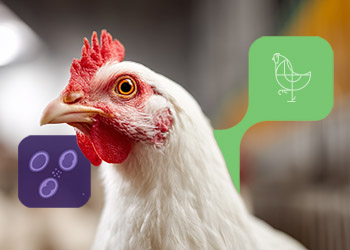
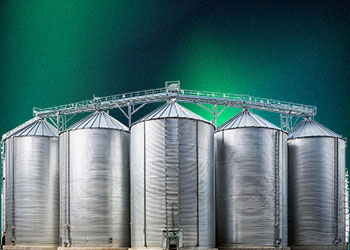
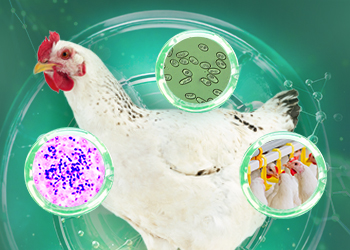
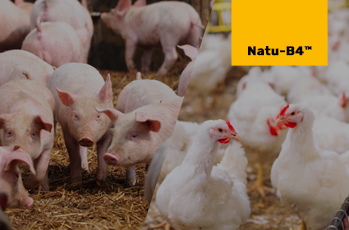

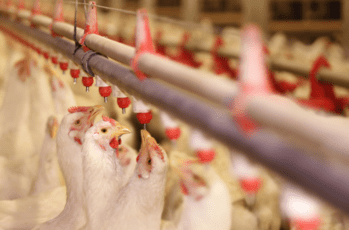
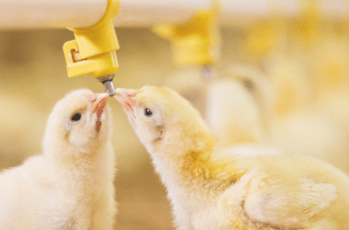
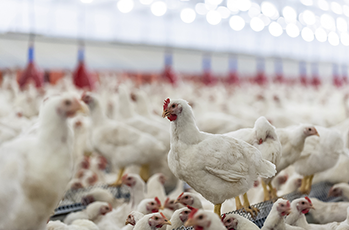
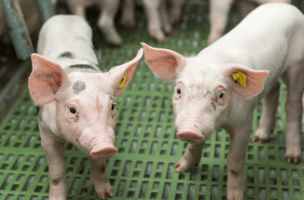
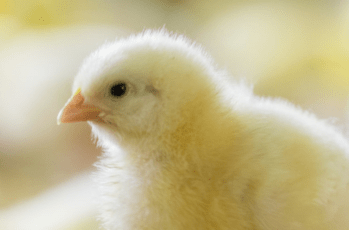
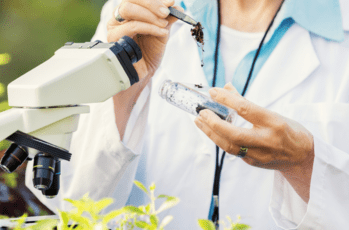
receive our newsletters.